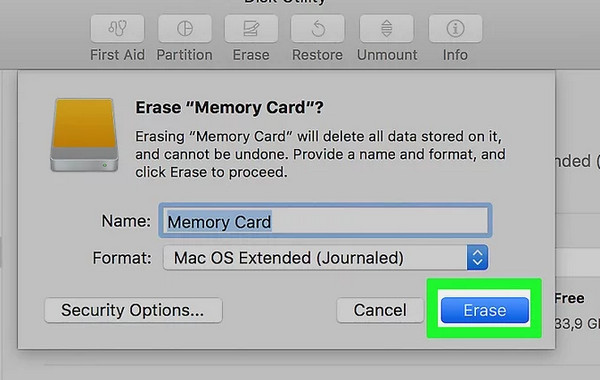How To Format Sd Card On Mac
To reformat an SD or micro SD card on your Mac, do this: Launch Disk Utility. It’s in Utilities folder inside the Applications folder. Find and select your SD card in the column on the left. Click the Erase tab. Step 4: Format the SD card In the Format window make sure that the correct File System is selected. It should be set to FAT32 for 32GB SD cards and EXFAT for 64GB SD cards. Select Quick Format. Once the formatting is complete, you can close the window.

Mac notebooks use the USB bus to communicate with the SD card slot. They have a maximum speed of up to 480Mbit/s.
How To Format Sd Card On Mac To Fat32
Mac desktops use the PCIe bus to communicate with the SD card slot. Desktops can transfer data at a faster rate.Check the packaging that came with your SD media to determine the maximum transfer rate that your specific card uses.To determine the maximum transfer speed of your Mac, you can use System Information. Choose Apple () menu About This Mac and then click System Report.If you use a Mac notebook:. Select Hardware, then select USB.
Select Internal Memory Card Reader and look for the Speed entry.If you use a Mac desktop computer:. Select Hardware, then select Card Reader. Look for the Link Speed entry. Computers that use the PCIe bus express their speed as GT/s. However, most media manufacturers preformat the media using common block-and-cluster sizes that don’t approach the theoretical limits of a given file system.Most SD cards use the FAT32 file format, and preformatted FAT32 SD media is commonly available up to a capacity of 32GB. Media that exceeds 32GB usually uses the exFAT file system, while some smaller capacity cards use the FAT16 file format. Preformatted FAT16 media is generally available up to a capacity of 2GB.If you use OS X Snow Leopard 10.6.5 or later, you can find out which file system you’re using:.
Insert the media into the SD card slot. Choose Apple menu About This Mac. The best single board on multi os. Click System Report. In the Hardware section, click Card Reader, and find the File System field. Information about products not manufactured by Apple, or independent websites not controlled or tested by Apple, is provided without recommendation or endorsement. Apple assumes no responsibility with regard to the selection, performance, or use of third-party websites or products. Apple makes no representations regarding third-party website accuracy or reliability.
Risks are inherent in the use of the Internet. For additional information. Other company and product names may be trademarks of their respective owners.